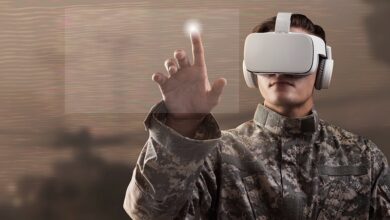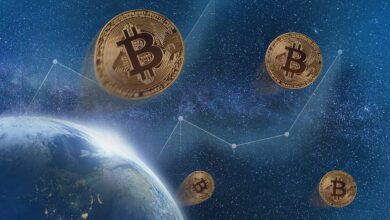DAOs: Governing the Future of Digital Organizations

The established structure of corporations, governments, and nearly all large human organizations has historically relied upon centralized hierarchies. These traditional models involve boards of directors, executive teams, and centralized legal entities to make decisions and manage funds.
This structure, while providing clear lines of authority, often suffers from slow, opaque decision-making processes, a fundamental lack of transparency, and a severe risk of internal corruption or mismanagement. The advent of blockchain technology has presented a profound, technological counter-proposal to this centuries-old paradigm.
Decentralized Autonomous Organizations (DAOs) represent a revolutionary new organizational structure. They utilize immutable smart contracts and on-chain voting to create organizations that are governed collectively by their members, rather than by a centralized management team. This radical model eliminates the need for human trust in a central intermediary. It replaces it entirely with verifiable, transparent code.
Understanding the unique structure, governance mechanics, and immense potential of DAOs is absolutely crucial for comprehending the future direction of digital finance, corporate governance, and community organizing in the Web3 era.
The Fundamental Concept of Decentralized Governance
The core philosophical and technical goal of a Decentralized Autonomous Organization (DAO) is to achieve governance without the reliance on a hierarchical, centralized authority. A traditional company has shareholders, but its daily decisions are executed by a select, small group of executives. A DAO shifts this decision-making power directly to its community of token holders. This fundamental shift democratizes organizational control.
A DAO is essentially an organization whose operational and decision-making rules are completely encoded in a transparent, auditable smart contract deployed on a blockchain. This code serves as the organization’s immutable, self-executing constitution. Once deployed, the rules can only be changed through the formal voting process established within the code itself.
The autonomy of a DAO comes from this reliance on code. The organization can execute actions—such as distributing funds, upgrading its protocol, or allocating capital—automatically and transparently, based on the outcome of a verified, on-chain vote. This eliminates the need for human intervention or external legal enforcement. The code executes the will of the majority.
Membership and voting power within a DAO are primarily determined by the ownership of the organization’s specific governance token. Holding the token grants the member a voice in the decision-making process. The more tokens a member holds, the greater their voting weight in the proposal process. This tokenized structure aligns financial investment with political influence.
The Essential Components of a DAO
The functional architecture of a DAO is built upon several interacting technological and social components. These components ensure that the organization can manage assets, make decisions, and execute actions transparently and securely. The system requires both technological infrastructure and active human participation.
A. The Smart Contract (Constitution)
The Smart Contract is the technical and legal foundation of the DAO. It defines the organization’s charter, its treasury rules, the proposal process thresholds, and the voting duration. This code is deployed on an immutable blockchain like Ethereum. Changing this core code requires a majority vote.
B. Governance Token
The Governance Token is the specific digital asset that represents membership and voting rights within the DAO. These tokens are distributed to community members, developers, and early investors. Holding the token provides a tangible stake in the organization’s future success. The price of the token often reflects the perceived value and influence of the organization itself.
C. The Treasury (The Vault)
The Treasury is the decentralized crypto wallet controlled entirely by the smart contract code. This wallet holds the organization’s capital and assets. No single person or central group has the ability to move these funds unilaterally. All expenditures from the treasury must be approved through a transparent, on-chain vote by the token holders. This ensures maximum financial accountability.
D. The Proposal System
All decisions must originate as a formal Proposal. Any member who meets a minimum token holding threshold can initiate a proposal for change, expenditure, or upgrade. The proposal must be submitted on-chain. This submission is often accompanied by a detailed description and technical specifications. This open system encourages continuous community input.
The Mechanics of Decentralized Voting
The decision-making process within a DAO is a multi-step sequence that is enforced entirely by the underlying smart contract. This transparent, rigorous process ensures that the outcome reflects the verifiable will of the majority token holders. The system prioritizes technological certainty over human discretion.
E. Submission and Quorum
Once a proposal is submitted, a specific voting period is initiated, lasting several days or weeks. For the vote to be valid, a minimum number of token holders (the quorum) must participate. The quorum ensures that major decisions are not made by only a small, unrepresentative group of members. This threshold is defined in the initial smart contract.
F. On-Chain Voting
Voting is conducted on-chain. Token holders cast their votes by digitally signing a transaction using their private cryptographic keys. The voting weight of each participant is directly proportional to the number of governance tokens they hold. The outcome is determined by the verifiable majority of the participating tokens.
G. Execution of the Outcome
If the proposal meets both the necessary quorum and the pre-defined majority threshold, the smart contract automatically executes the outcome. For example, if the vote was to allocate funds for a new project, the contract instantly transfers the crypto assets from the treasury wallet to the designated recipient. This execution by code is what makes the organization truly “autonomous.”
H. Delegation of Votes
To encourage participation from smaller or less technically involved members, many DAOs allow for vote delegation. A token holder can delegate their voting power to a trusted community member or a designated governance expert. The delegator retains ownership of their tokens. This mechanism ensures that a broader range of expertise is actively involved in the decision-making.
Benefits and Advantages of the DAO Model
![]()
The DAO structure offers fundamental advantages over traditional centralized organizations. These benefits are rooted in the core technological features of the blockchain. They promote both efficiency and ethics.
The transparency of the system is immense. The rules, the treasury balance, and every voting history are all publicly verifiable on the immutable blockchain. This eliminates the need for expensive external auditing to verify financial transactions. Public oversight creates inherent accountability.
DAOs are designed to be highly resilient and censorship-resistant. Because no central authority can control the network or the treasury, the organization cannot be easily shut down or seized by adverse governmental action. The system continues to operate as long as the underlying blockchain remains functional.
The operational efficiency can be extremely high. By automating major decision execution and treasury management through smart contracts, DAOs eliminate bureaucratic overhead and the associated administrative costs. This streamlined process focuses resources directly on the organization’s mission.
The governance model promotes global collaboration. Participants from any country can contribute, hold tokens, and vote on proposals. This opens the organization to a diverse, worldwide pool of talent and investment. The DAO structure facilitates unprecedented international coordination.
Challenges and Future Evolution
![]()
Despite their immense promise, DAOs face several complex, ongoing challenges that must be overcome for widespread, mainstream adoption. These hurdles involve issues of legality, security, and the psychology of collective decision-making. The structure is still highly experimental.
Legal and Regulatory Uncertainty is perhaps the most significant challenge. Traditional legal systems struggle to classify DAOs, which lack a central legal jurisdiction, incorporation documents, or a clear set of responsible human principals. Legal clarity is essential for managing external contracts and liabilities.
Security Risk is inherent in the reliance on smart contracts. A bug or vulnerability in the core governance code can be exploited by a malicious actor, potentially leading to the catastrophic loss of the entire treasury. Security auditing is necessary but cannot guarantee perfect protection against all future exploits.
The scalability of decentralized decision-making is also a practical challenge. Achieving consensus among thousands of anonymous token holders on complex, technical proposals can be slow and inefficient. This lack of agility can delay critical upgrades or necessary crisis response. Management efficiency is a constant concern.
The issue of whale governance is an ethical challenge. Because voting power is tied to token ownership, a small group of large token holders (whales) can dominate the voting process. This concentration of power can undermine the system’s democratic ideals. DAOs must develop mechanisms to promote broader voter engagement.
Conclusion
DAOs are revolutionary structures that utilize smart contracts to establish governance by transparent code.
This decentralized model eliminates centralized hierarchy, transferring decision-making power directly to the token-holding community.
The smart contract serves as the organization’s immutable constitution, defining rules and governing the secure treasury wallet.
Voting power is determined by the ownership of the native governance token, aligning financial investment with political influence.
The on-chain voting process ensures absolute transparency, verifying the outcome publicly and enforcing the will of the quorum-majority.
This structure is highly censorship-resistant and resilient, as no single authority can unilaterally seize assets or shut down operations.
Legal and regulatory uncertainty remains the primary external hurdle, complicating external contracts and defining legal liability.
The risk of smart contract exploits poses the most significant security threat, demanding continuous, rigorous code auditing and verification.
DAOs ultimately provide a powerful, efficient, and ethical alternative to the opaque, centralized structures of traditional corporations.
The system promotes unprecedented global collaboration and democratizes access to organizational control and capital allocation decisions.
Mastering this governance model is essential for comprehending the future of transparent finance and digital community organizing.
DAOs stand as the authoritative next step in the evolution of human organizations, built on trustless, verifiable technology.


